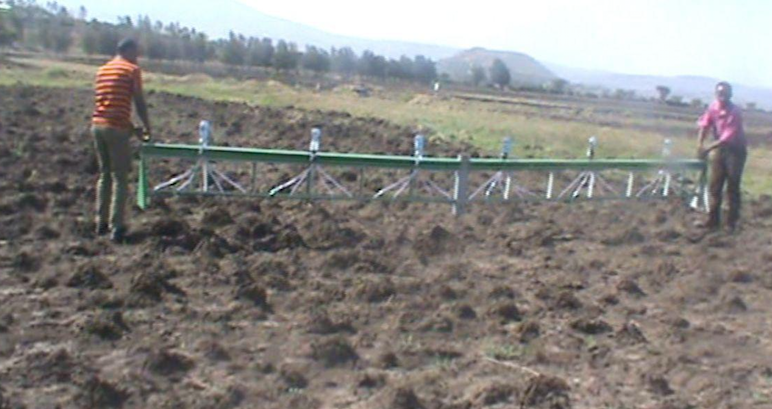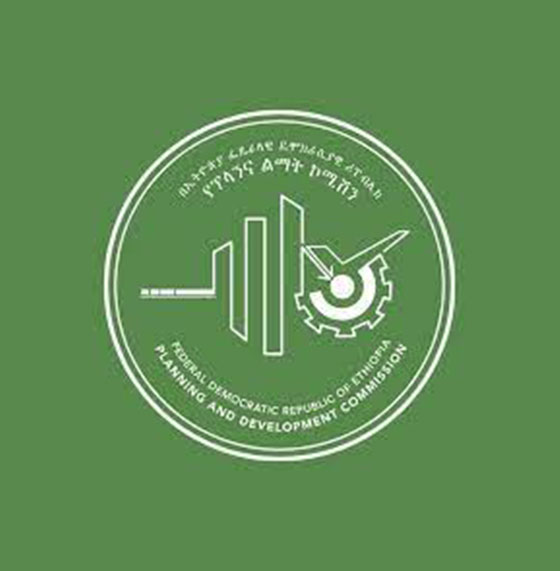
Ethiopia is about to change how it estimates the annual growth of its economy. A federal agency in charge of planning economic activities is set to revise the base year for the estimation of gross domestic product (GDP) and use input and output analysis to measure the national economy.
In doing this, planners at the Planning & Development Commission hope to decompose sectors and sub-sectors to show the relationship between goods and service value chains. They believe this is a better methodology to get a clearer picture of the value addition process in each sector.
Since 1961 Ethiopia has been using the expenditure method and production approach in combination to calculate the GDP. The expenditure method calculates the GDP by merging the consumption and investment of the private sector and the government, while the production approach assesses the total value of economic output and deducts the cost of intermediate goods that are consumed in the process.
The latest base year set by the two approaches was made in the 2015/2016 fiscal year. During this year with GDP at market price, the final result of units of production stood at 1.6 trillion Br. The real GDP per capita, the inflation-adjusted value of all goods and services, registered 1.5 trillion Br.
Five years later, GDP at market price stood at 2.7 trillion Br, and the real GDP per capita landed at 1.9 trillion Br.
The latest base year does not reflect the economy at all, according to Fitsum Assefa (PhD), head of the Commission, which recently launched a 10-year economic development plan that intends to achieve 10.2pc annual economic growth over the next 10 years.
The combination of expenditures, production and income models will replace the existing system that has been in place for decades, according to the Commission's plan. It balances expenditure and production approaches along with an income approach, which is the sum of all the salaries, wages, rent interest and profits.
"Unfortunately, the upcoming year is also the crisis year and won't give the best picture of the growth of the economy," Fitsum told Fortune.
Within the last two years using the new approach, the Commission redid the GDP estimation for the last base year, which was the 2015/2016 one. This was approved internally, and it is going to be tabled for public consultation to show the new approach they have taken to development partners and the Ethiopian Economist Association.
"We're now contemplating using the supply-use table for the base year of 2015/16 until this crisis ends," said Fitsum.
The Commissioner also added that conducting data collection with the nature of the pandemic is very difficult.
"Regardless, the further the base year," she said, "the harder it is to get the best picture of the economy. "
The Commission has tentatively decided to make a decision by September as to whether it will use the updated supply-use table for the base year of 2015/16 or update the table to a nearer year with a healthy economy. Alongside the input-output table, the Commission is also working on developing an economic model for the country.
It is best that the government use 2015/2016 as a base year at least for the next two to three years, according to Alemayehu Geda (PhD), a macroeconomist and lecturer at Addis Abeba University's Faculty of Business & Economics.
"This is despite the changes in price as well as new goods and services in the market," he said. "And the government needs to hold a census to grab the full concept of the GDP somehow."
Backing Alemayehu's view, a macroeconomist, who commented under the condition of anonymity, says that the Commission needs to think twice before changing the base year at this time.
The current situation does not favour any major policy reforms. The world does not know when the pandemic will be over, the global economy is undergoing a recession, the political situation in the country is on the edge, the supply and demand chain has been distorted, and inflation in the country is expected to reach 30pc, according to the macroeconomist.
"Thus, it's hard to predict policy, and changing the base year isn't advised," he said.
With the new approach, the input and output analysis will give good data coherence and provide good information for policymaking, according to him.
"But it needs a vast amount of data collection and quality as well as good knowledge statistics," he said.
Alemayehu recommends that this should be a lesson to update or revise figures continuously and to be transparent with the data to be shared publicly.
At the beginning of this year, the Central Statistical Agency revised the outdated Consumer Price Index (CPI) for a basket of goods and services, prices set as the basis for inflation rate measurements. The revision was made on major indicators by replacing the seven-year-old base year that is used for comparison in the measure of the economic index.
PUBLISHED ON
[ VOL
, NO
]

Viewpoints | Jan 09,2021

Featured | Sep 08,2019

Radar | Jan 22,2022

Fortune News | Jul 31,2021

Fortune News | Jul 11,2021

Dec 22 , 2024 . By TIZITA SHEWAFERAW
Charged with transforming colossal state-owned enterprises into modern and competitiv...

Aug 18 , 2024 . By AKSAH ITALO
Although predictable Yonas Zerihun's job in the ride-hailing service is not immune to...

Jul 28 , 2024 . By TIZITA SHEWAFERAW
Unhabitual, perhaps too many, Samuel Gebreyohannes, 38, used to occasionally enjoy a couple of beers at breakfast. However, he recently swit...

Jul 13 , 2024 . By AKSAH ITALO
Investors who rely on tractors, trucks, and field vehicles for commuting, transporting commodities, and f...

Jul 12 , 2025
Political leaders and their policy advisors often promise great leaps forward, yet th...

Jul 5 , 2025
Six years ago, Ethiopia was the darling of international liberal commentators. A year...

Jun 28 , 2025
Meseret Damtie, the assertive auditor general, has never been shy about naming names...

Jun 21 , 2025
A well-worn adage says, “Budget is not destiny, but it is direction.” Examining t...